Copper(I) Oxide and Copper(II) Oxide: Key Differences and Properties
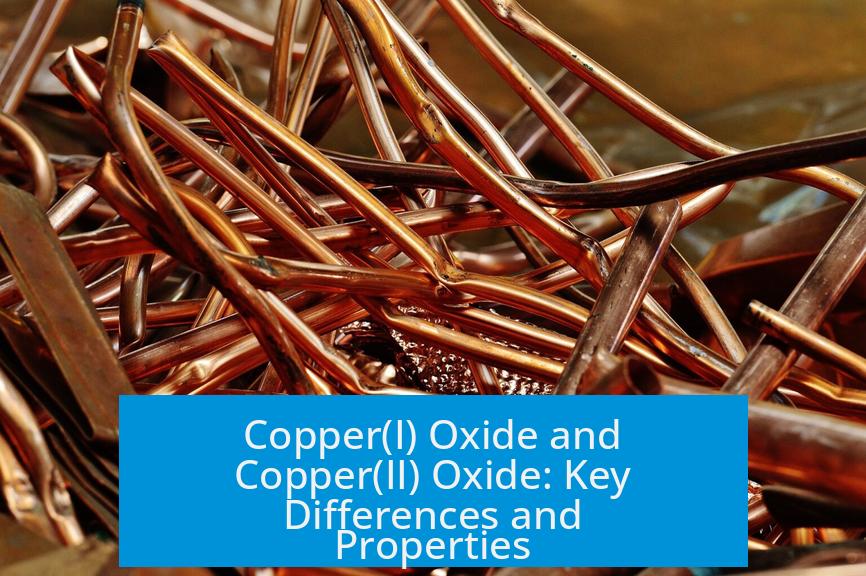
Copper(I) oxide and copper(II) oxide differ in oxidation state, color, and stability. Copper(I) oxide often oxidizes to copper(II) oxide and shows a distinct red hue, while copper(II) oxide is black and more stable. Isolating pure copper(I) oxide can be challenging due to its tendency to convert to copper(II) oxide or blend with metallic copper.
Oxidation States and Composition
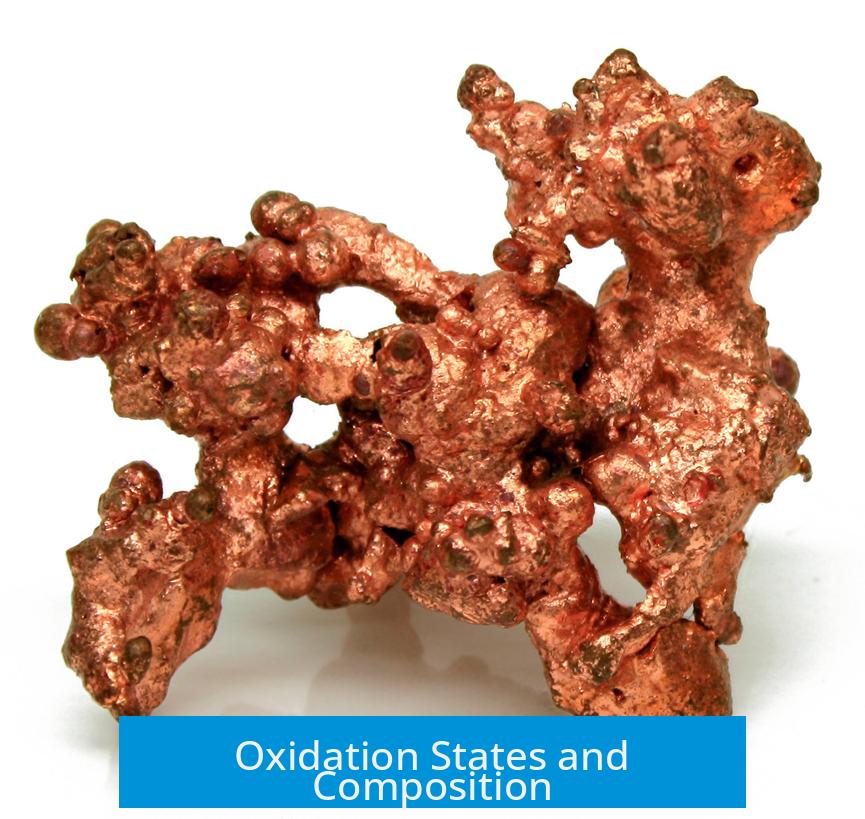
Copper(I) oxide (Cu2O) contains copper in the +1 oxidation state. Copper(II) oxide (CuO) has copper in the +2 oxidation state. Cuprous oxide tends to oxidize in air or under certain conditions, forming cupric oxide.
- This oxidation process complicates the isolation of pure copper(I) oxide.
- Metallic copper can sometimes contaminate samples of copper(I) oxide, making separation difficult.
Physical Appearance and Color
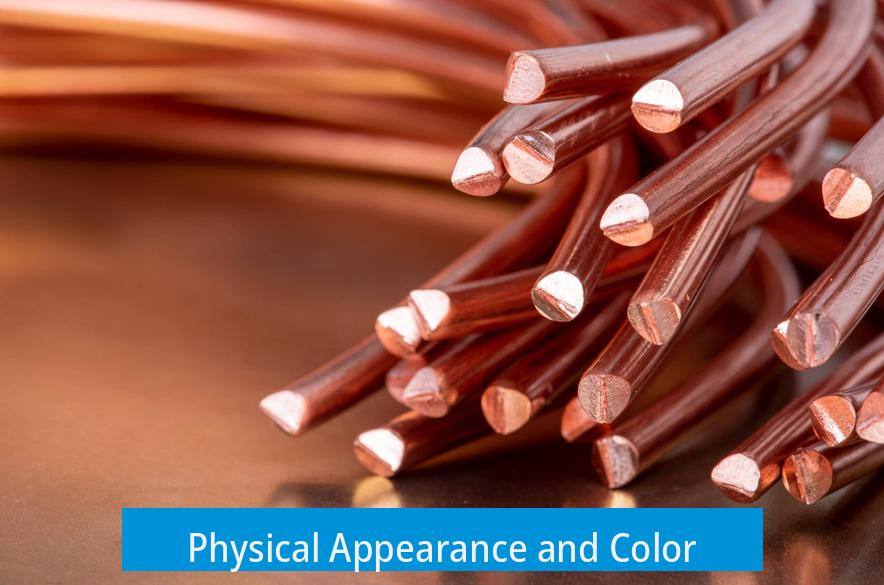
The two oxides have distinct physical colors that help in identification:
| Oxide | Oxidation State | Color |
|---|---|---|
| Copper(I) oxide | +1 | Red, similar to fine copper powder |
| Copper(II) oxide | +2 | Black |
Copper(I) oxide’s red color resembles extremely fine copper powder, which reflects its partial metallic character. In contrast, copper(II) oxide appears as a black solid, which is typical for many metal oxides in the +2 state.
Environmental Impact and Considerations
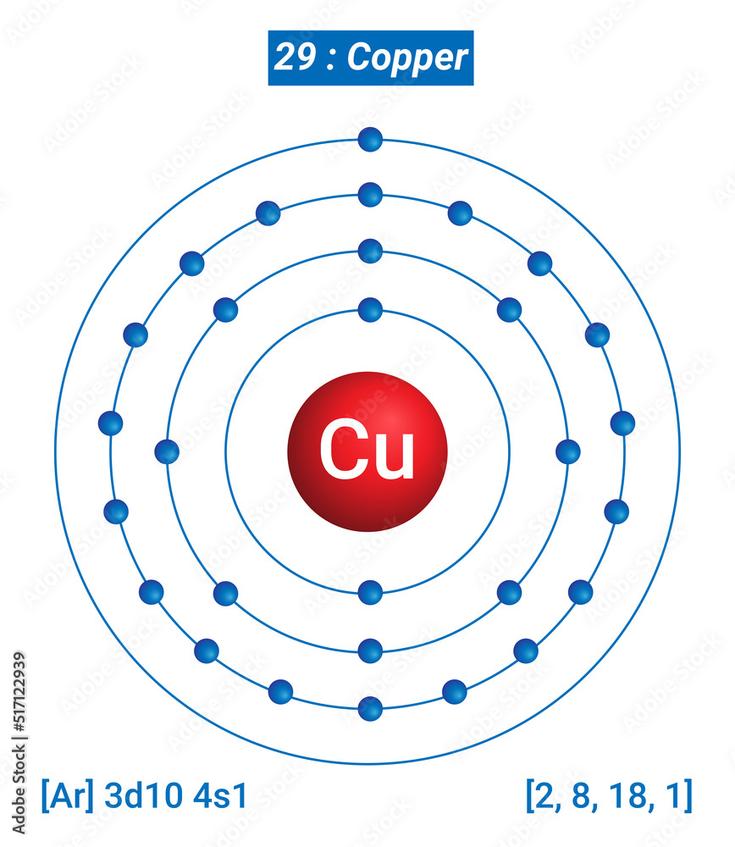
The environmental hazard posed by copper oxides depends on concentration and form. Both copper(I) and copper(II) oxides can contribute copper ions to ecosystems, which may be toxic at high levels. However, their environmental impact often depends on release context and exposure duration.
Careful handling and disposal are recommended in industrial or laboratory settings to mitigate potential copper ion toxicity.
Summary of Key Points
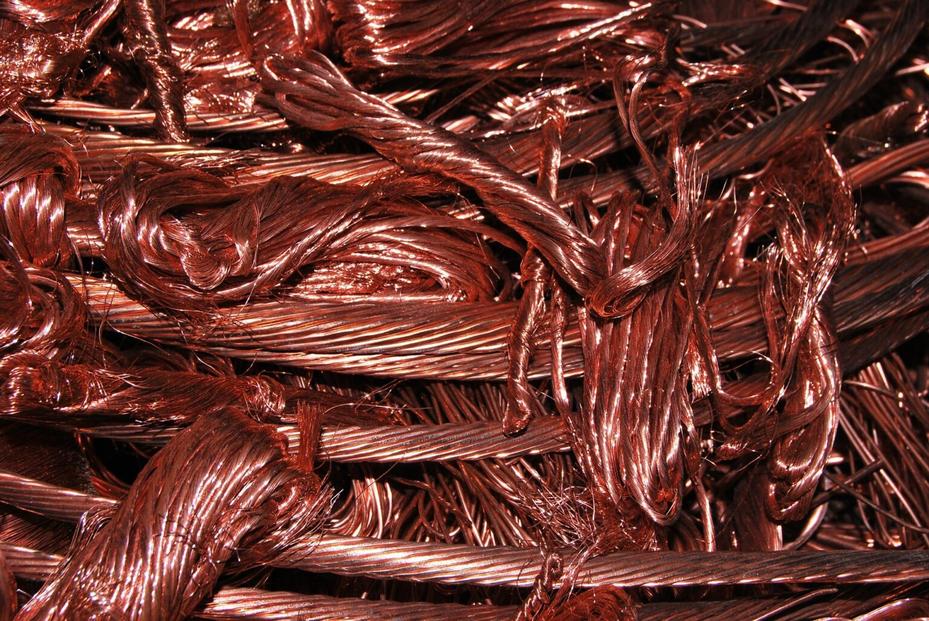
- Copper(I) oxide is red and less stable than copper(II) oxide.
- Copper(II) oxide is black and commonly forms via oxidation of copper(I) oxide.
- Separating copper(I) oxide from metallic copper is difficult due to oxidation and contamination.
- Both oxides can pose environmental risks if improperly managed.
Demystifying Copper Oxides: The Red vs Black Showdown
What exactly differentiates copper(II) oxide and copper(I) oxide? Simply put, copper(I) oxide (Cuprous oxide) is the redhead of the copper oxide family, while copper(II) oxide (Cupric oxide) wears black. But what happens beneath the surface is a story of transformation, chemistry challenges, and environmental puzzles.
Let’s dive into the world of these two intriguing compounds and uncover their secrets.
The Oxidation Tango: From Cuprous to Cupric
Copper(I) oxide (Cu2O) doesn’t just sit idly in a vial. It often finds itself turning into copper(II) oxide (CuO), a process known as oxidation. In simpler terms, the red copper(I) oxide is prone to losing electrons and turning into the darker, black copper(II) oxide. This transformation is so common that fresh samples of cuprous oxide often contain at least a hint of its black cousin.
If you thought isolating copper(I) oxide was straightforward, think again. Separating Cu2O from pure metallic copper is tricky. The subtle difference in their composition means contamination with metallic copper is a persistent problem, often turning your intended cuprous oxide sample into a blend with its metal origin.
Why does this matter? Because in high-precision applications, like catalysis or semiconductor manufacturing, purity is king. If your copper oxides come mixed with metallic copper or in the wrong oxidation state, the whole process can sputter or fail.
Colors That Tell a Tale: Red vs. Black
Here’s a handy visual: copper(I) oxide flaunts a reddish hue reminiscent of super fine copper powder. Imagine holding a tiny pile of copper dust that’s been finely ground—remember that distinct reddish-orange glow? That’s Cu2O for you.
Copper(II) oxide, in contrast, is the dark horse—a pitch-black powder with a matte finish. This distinct coloring doesn’t exist just for show: it signals the different chemical and electronic structures of the two oxides.
When you see these colors, you’re actually witnessing the different energy levels of the electrons in the compounds. The red Cu(I) oxide absorbs different wavelengths of light compared to black Cu(II) oxide, which reflects very little visible light, hence the dark appearance.
Environmental Concerns: Are Copper Oxides Hazardous?
Here’s a natural question upon encountering these metal oxides: “Are they safe? Do they pose environmental risks?”
Copper compounds, in general, can be a double-edged sword environmentally. Copper ions can act as micronutrients essential for plant and animal life. However, both copper(I) oxide and copper(II) oxide can be toxic in large quantities or particular forms—especially to aquatic life.
Why? Because copper ions interfere with the biological processes of some microorganisms and aquatic species. It can damage cell membranes and disrupt enzyme systems. That said, copper oxides are relatively insoluble, reducing the immediate bioavailability compared to highly soluble copper salts, but caution is still recommended.
Local regulations tend to restrict how much copper oxide dust or waste can be released into the environment, especially near sensitive ecosystems. Proper handling, storage, and disposal play key roles in mitigating any hazards.
Practical Takeaway: What Does This Mean For You?
If you’re a chemist, materials scientist, or even a curious DIY enthusiast dealing with copper oxides, here are some tips to keep in mind:
- Storage matters: Copper(I) oxide often morphs into copper(II) oxide over time. To preserve the reddish Cu(I) oxide, store it in an oxygen-low environment.
- Visual clues are useful: Use the color to quickly distinguish between Cu(I) and Cu(II) oxides—red means Cu(I), black means Cu(II).
- Environmental responsibility: Always follow local guidelines for disposal and avoid dumping copper oxides into waterways or soil.
- Purity is key: When isolating copper(I) oxide, reduce contamination from metallic copper by careful technique or using specific synthesis methods.
A Personal Perspective
In my experience working with these copper oxides, I found the color difference to be an excellent fingerprint. Early on, I tried to collect pure Cuprous oxide only to be frustrated by the unexpected black impurities of Cupric oxide creeping in. It required changing storage practices and improving isolation methods.
One memorable experiment involved using Cuprous oxide as a pigment. Its warm, red tone added an earthy vibrancy to the ceramic glaze I was developing. Meanwhile, copper(II) oxide’s black made for stark contrast layers but was less vibrant. The chemistry behind these colors felt like art meeting science.
FAQ: Still Curious?
Q: Why does copper(I) oxide oxidize so easily?
A: Because Cu(I) in Cu2O is less stable than Cu(II) in CuO under typical air and moisture conditions, leading it to transform into the more stable black oxide.
Q: Can copper oxides be used safely in consumer products?
A: Yes, with proper formulation and handling. Copper(I) oxide is sometimes used as an antifouling agent, for example, but environmental exposure is carefully managed.
Final Thoughts: The Dynamic Duo of Copper
Copper(II) oxide and copper(I) oxide aren’t just two black-and-red powders in a flask. They are dynamic players in chemistry with unique properties, challenges, and uses. Recognizing their differences isn’t just academic—it influences how they’re made, used, and disposed of.
So next time you spot a reddish or black copper oxide, remember you’re witnessing a battle between two oxidation states. Understanding this will not only deepen your knowledge but help you handle these fascinating compounds better and more responsibly.
What causes copper(I) oxide to transform into copper(II) oxide?
Copper(I) oxide tends to oxidize when exposed to air, turning into copper(II) oxide. This change happens because copper(I) oxide is less stable in normal conditions.
Why is copper(I) oxide red while copper(II) oxide is black?
Copper(I) oxide has a reddish color that looks like fine copper powder. Copper(II) oxide is black, showing a clear color difference linked to their chemical structures.
Is it difficult to separate copper(I) oxide from metallic copper?
Yes, isolating copper(I) oxide from metallic copper can be challenging. They often mix during production, making pure copper(I) oxide less common.
Are copper oxides hazardous to the environment?
Both copper(I) and copper(II) oxides may pose environmental risks. They can contaminate soil and water if not handled properly, requiring careful disposal.
How can I visually distinguish between copper(I) oxide and copper(II) oxide?
Look at their colors: copper(I) oxide is red, similar to fine copper powder, while copper(II) oxide is black. This color difference helps identify them easily.


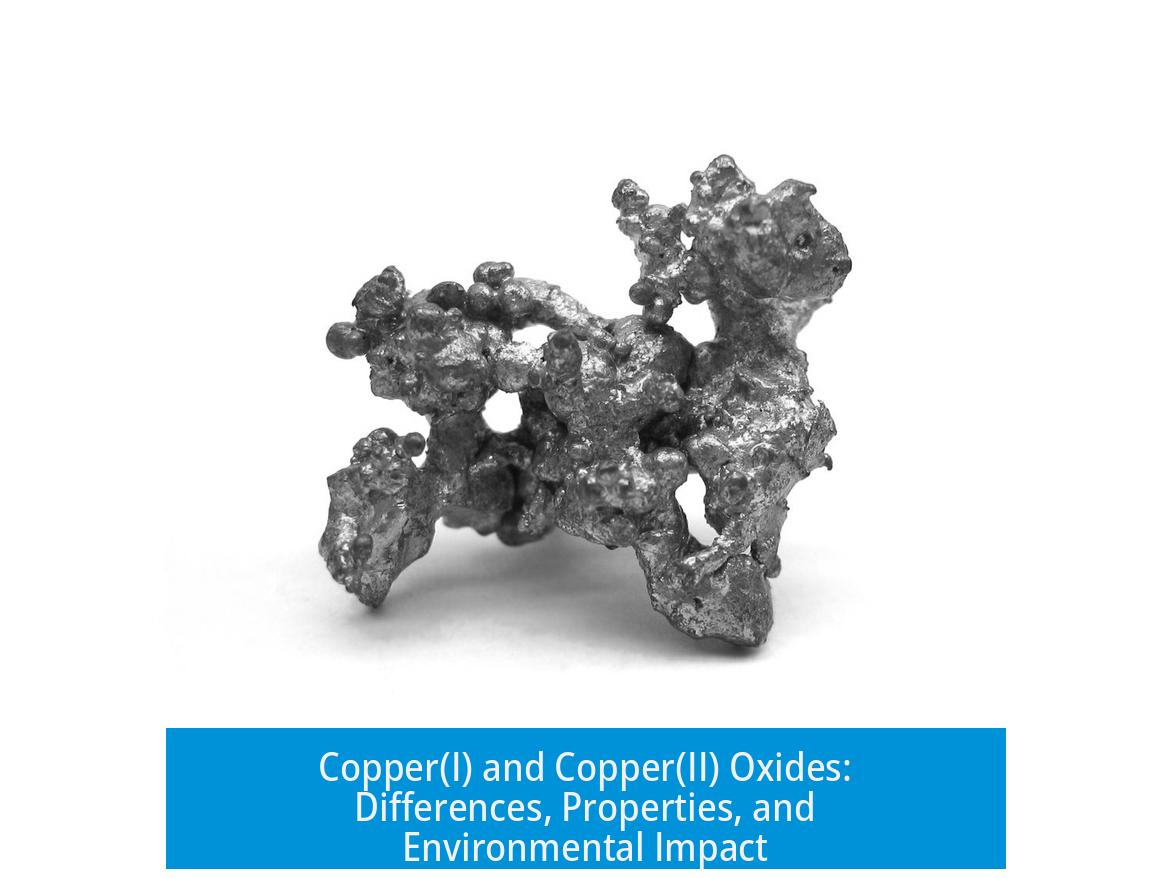


Leave a Comment